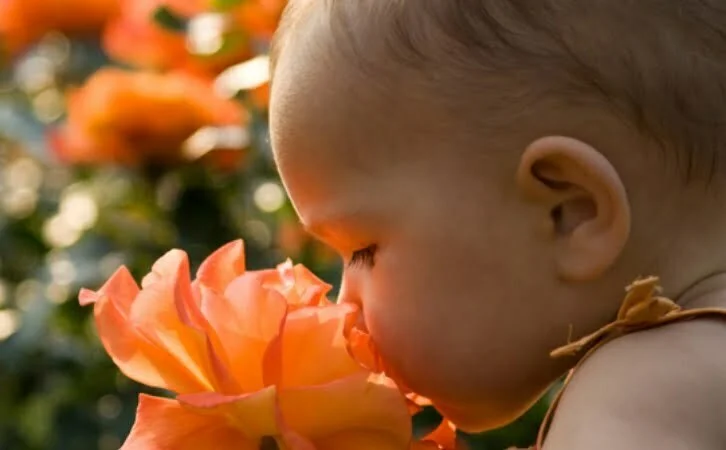Sensory activities are essential for the development of toddlers as they help them learn about the world around them.
Toddlers can develop their cognitive, physical, and social skills by engaging in various sensory activities. These activities can also be a lot of fun for both toddlers and parents.
This article will explore different types of sensory activities for toddlers and how to create them.
Read Here: No Prep Activities for Toddlers
Types Of Sensory Activities | Fun Sensory Activities For Toddlers
There are four types of sensory activities: touch-based, sound-based, smell-based, and sight-based. Each type offers unique benefits for toddlers.
1. Touch-Based Activities

These activities involve tactile exploration and are great for developing fine motor skills. Playdough or clay is an excellent example of this type of activity. Toddlers can squish, roll, and shape the material to create different objects.
Finger painting is another great touch-based activity that allows toddlers to explore different textures and colors. Sensory bins, which can be filled with various materials such as rice, beans, or sand, also provide an opportunity for tactile exploration.
Read Here: Fun Fall Crafts for Preschoolers
2. Sound-Based Activities

Such activities help toddlers develop their auditory senses. Musical instruments like drums or xylophones can allow toddlers to create their sounds.
Listening to games like “What’s that sound?” can help toddlers identify different sounds in their environment. Singing and dancing are also great sound-based activities that can be fun and engaging.
3. Smell-Based Activities

Smell-based activities involve exploring different scents and can help toddlers develop their olfactory senses. A scavenger hunt where toddlers can search for different scents, like flowers or spices, can be a fun way to engage their senses.
Aroma jars containing different scents, like lavender or cinnamon, can also encourage sensory exploration. Cooking or baking with toddlers can also be a tremendous smell-based activity as they can explore different scents and tastes.
Read Here: Activities That Allow Parents To Connect With Kids
4. Sight-Based Activities

These activities include exploring different visual stimuli and can help toddlers develop their visual senses. Flashcards with other pictures can help toddlers learn new words and identify objects.
Picture books are also great for exploring different images and can encourage language development. Nature walks provide an opportunity for toddlers to explore the natural world around them and can
Tips For Creating Sensory Activities

Here are some tips for creating effective sensory activities:
- Identify the sensory system(s) you want to target: There are eight sensory systems in the human body, including visual, auditory, tactile, olfactory, gustatory, vestibular, proprioceptive, and interoceptive. Identify which senses you want to target and tailor your activity accordingly.
- Consider the age and developmental level of the child: Sensory activities should be age-appropriate and tailored to the child’s developmental level. For example, younger children may enjoy exploring different textures or colors, while older children may prefer activities that challenge their fine motor skills or problem-solving abilities.
- Use a variety of materials: Use various materials and textures to stimulate different senses. For example, you can use sand, rice, or water for tactile activities and scented oils or spices for olfactory activities.
- Incorporate movement: Movement activities that engage the vestibular and proprioceptive systems can be especially effective for children with sensory processing disorders. Jumping, swinging, and climbing can provide proprioceptive input and help children regulate their sensory systems.
- Create a safe and comfortable environment: Ensure the domain is safe and comfortable for the child, with appropriate lighting, temperature, and noise levels. You can also provide a quiet space for children needing a sensory stimulation break.
Safety Considerations While Sensory Activities With Toddlers

Safety is a top priority when creating sensory activities for toddlers. Here are some important safety considerations to keep in mind:
- Choose age-appropriate materials: Select materials that are safe and appropriate for the age and developmental level of the child. Avoid small objects that could be choking hazards, and choose non-toxic materials that are safe if ingested.
- Supervision is key: Always supervise toddlers during sensory activities, and ensure that they are using the materials safely and appropriately. Keep a close eye on them, especially when they are playing with materials that could pose a risk, such as water or sand.
- Consider sensory sensitivities: Be aware of any sensory sensitivities the child may have and tailor the activity accordingly. For example, some children may be sensitive to certain textures or scents, so choosing comfortable and non-irritating materials is important.
- Keep the environment safe: Ensure the domain is safe and free from sharp edges or tripping hazards. Cover any electrical outlets and keep cords out of reach.
- Clean and sanitize materials: Toddlers are still developing their immune systems, so keeping materials clean and sanitized is essential. Wash hands before and after sensory play, and clean and sanitize materials regularly.
10 Best Sensory Activities for Kids video
Conclusion
These activities can help toddlers develop their sensory processing, fine motor, and problem-solving skills. However, safety is always a top priority when creating sensory activities for toddlers.
By following the safety considerations mentioned above and the right selection of materials, parents, and caregivers can create a safe and enjoyable sensory play experience for toddlers that promotes their learning and development.
reference
Fun Sensory Activities For Toddlers


